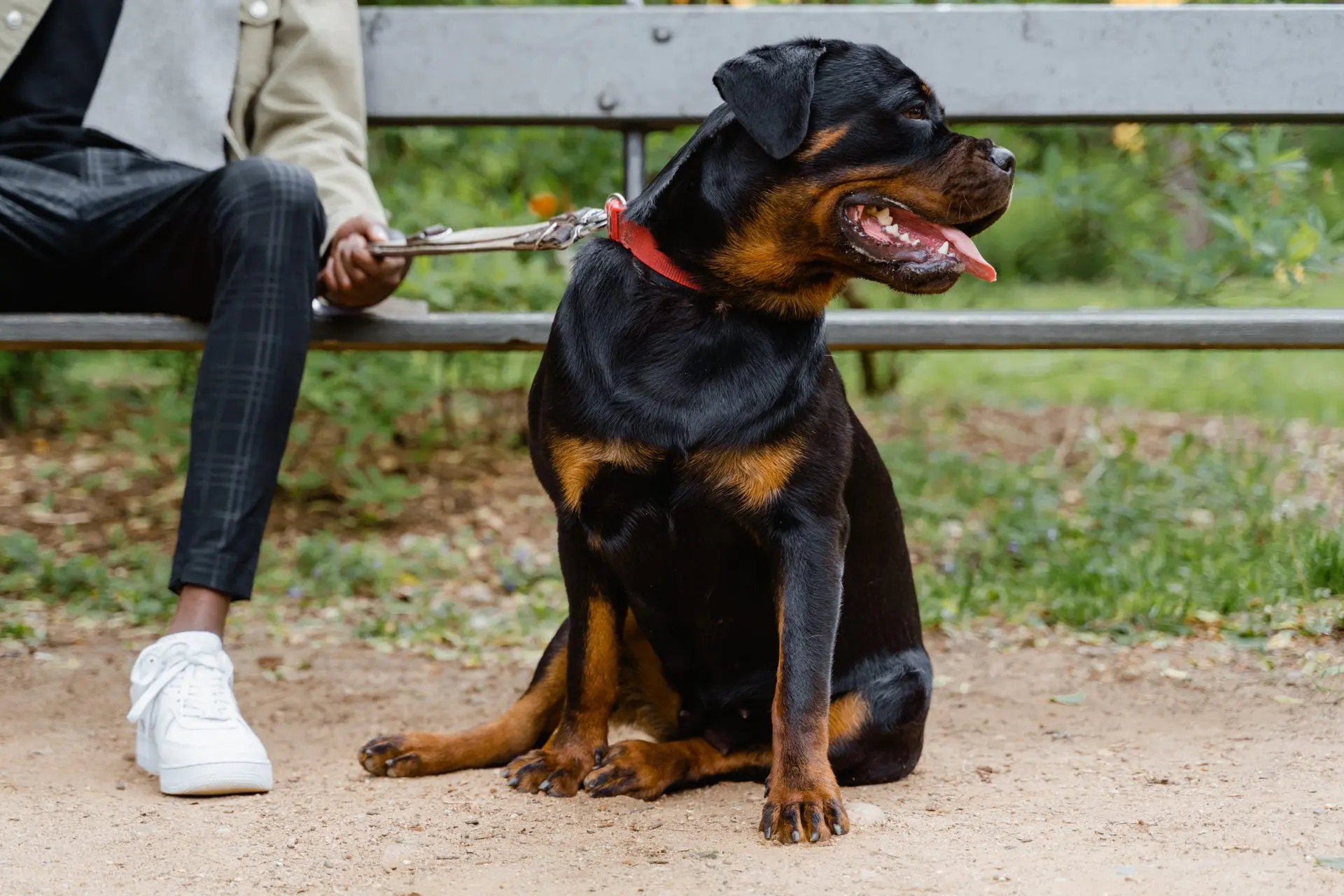Why Do They Cut Rottweilers Tails?

Tail docking (cutting) in dogs is controversial, especially in the modern world. So why do they still cut Rottweilers tails?
In years gone by (and I mean historically), tail docking in Rottweilers was done for purposeful reasons.
As Rottweilers were mainly bred as working dogs, used for herding, guarding, and carting, docking their tails was actually done to prevent causing them injury and help them fulfil their “worker dog” duties. Thus, you could say it was done with the dog’s best interests in mind, something that’s slightly more understandable.
However, unfortunately, in this day and age, people still have Rottweilers tails docked for cosmetic reasons. They somehow believe that this makes the dog more characteristic.
In most cases, this is an entirely unnecessary and painful operation for any dog to endure, which is why it’s now illegal in many parts of the world.
If you’re considering welcoming a Rottweiler into your home, it’s highly recommended to check out whether or not the breeders support tail docking and steer away from those who do.
Of course, this depends on where you’re from. If you’re in the UK, for example, this cruel procedure is now completely illegal (thankfully), so if you do come across a breeder who is selling pups with docked tails, they are, in fact, breaking the law.
Why Do Some Owners Choose to Dock Tails?
While here at Paw Planning, we don’t support breeders that cut Rottweilers tails or the general practice of tail docking under any circumstances, some still argue it’s a beneficial operation regarding the dog’s well-being.
One of the primary reasons people still cut Rottweilers tails is for a more intimidating appearance, which unfortunately means, it’s for show. A dog shows affection and happiness by wagging their tail, and when this trait is removed, it makes the dog hard to read at first glance, potentially putting off intruders.
Personally, I think if an intruder was to approach a Rottweiler, tail wagging or not, they’d think twice about trespassing anyway, so in my eyes, this is absolutely not an excuse to put a dog through the tail docking procedure.

What is the Impact on the Dog From Docking the Tail?
While many years ago, tail docking was genuinely used to protect the dog from harm or injury, I don’t think people then realised the potential dangers of the procedure. Another reason why back then, it was never frowned upon. That said, animal welfare groups were also at a minimum, so many never questioned the practice.
However, for reasons unknown, people still think that putting their puppies through an operation that removes part of their natural anatomy is okay, despite there now being widespread knowledge and warnings of the fact this is a painful procedure that isn’t without risks and complications.
Below are the possible side effects and reasons why we think tail docking should be illegal across the board.
- Pain – The first and foremost reason tail docking should be fought against is the obvious reason it’s putting a dog through unnecessary pain. And not just pain from the recovery of such a procedure; long-term, chronic pain can develop through neuromas. It’s hard to measure the amount of pain a dog experiences during tail docking, and due to the popularity of this operation decreasing (thank goodness), it’s unlikely we will ever know for sure.
- Mobility – A dog’s tail is an extension of its spine. It’s an essential part of their anatomy which contributes towards standard movement and balance. Therefore, their ability to perform everyday motions is hindered by removing their tail.
- Complications – Tail docking is not a simple procedure by any means. It includes trauma to nerve endings and other surrounding tissues that could be permanently damaged during the operation. Some argue that doing this at a younger age lessens the risks, but this is not actually true. Performing tail docking at any age poses potential long-term complications. Of course, there is also the risk of infection and neurological conditions caused by damaged nerves which could lead to potential behavioural problems and even aggression.
- Socialisation – Dogs use their tails as a primary way of communication, not just with humans, but with other animals too. A dog with a docked tail is unable to express their emotions as clearly, which can lead to other dogs misunderstanding its presence, and potentially seeing them as a threat.
The Legalities of Docking A Rottweilers Tail
While we’re all extremely supportive of the fact that tail docking is now illegal in many parts of the world, including the UK, Europe and Australia. There are some places where it’s still a common practice in Rottweiler breeding.
For example, in the United States, it’s still very much standard procedure to cut Rottweilers tails.
However, in some states of America, there are steps being taken to ban tail docking. In California and Washington, tail docking has already been banned unless there is a genuine medical reason for the operation to be undergone.
Thankfully, a lot of Animal Welfare Organisations around the globe are putting pressure on legislators to ban tail docking and ear cropping across the board, and not just in dogs, but in all species.
Should I Dock My Rottweiler’s Tail? A Final Word
Many breeders still cut Rottweilers tails and although tail docking is still legal in some parts of the world, this doesn’t mean it’s okay or something that should be done for aesthetic purposes or financial gain.
Of course, we understand that there are some circumstances where a vet may advise this procedure for medical purposes. This could include injury or birth defects.
It’s also important to mention that although rare, in some cases, Rottweilers are actually born with an already stumped tail. However, this is not at all very common.
The overall thing to consider here is that when purchasing a puppy, you have its best interests and wellness at heart, and this is not their appearance or ability to intimidate.
We would always advise thoroughly researching breeders before taking any steps towards getting a puppy and only support those who have responsible values when it comes to tail docking.